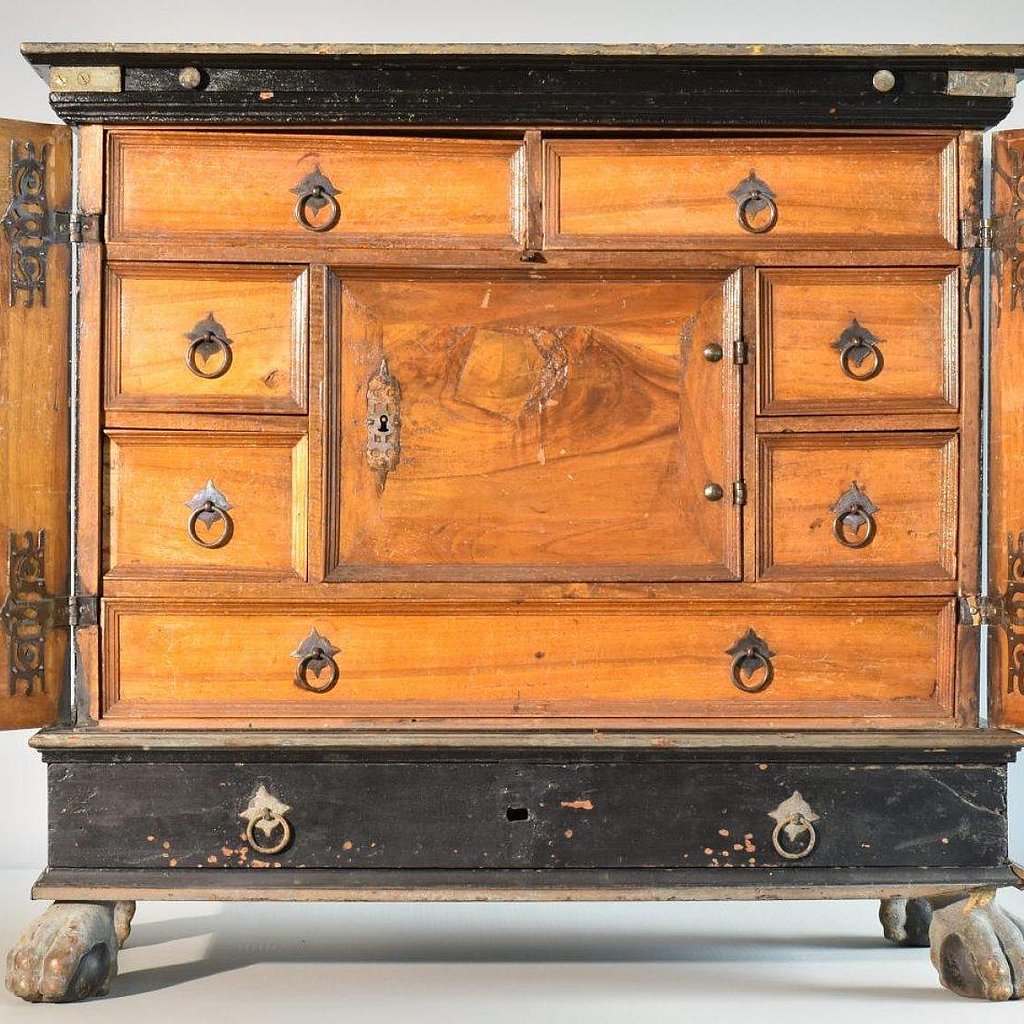Worshipped, packed away, forgotten: Nietzsches unknown interior with furniture painted black
The Klassik Stiftung Weimar presents the personal belongings of the Nietzsche siblings for the first time – from Friedrich’s living room furniture to Elisabeth’s souvenirs from Paraguay. The desolate condition of the furnishings and household items reflects their eventful history.
The devotional objects, once worshipped by the phi- losopher’s admirers, were packed away in post-war East Germany and have since been practically forgot- ten. On the occasion of the 2023 Theme Year “Living”, the exhibition “The Private Nietzsche – An Impossible Exhibition” presents the unrestored objects in crates and asks how museums should treat the memorabil- ia of historic figures. The Nietzsche-Archiv is both an outstanding and problematic commemorative site. The archive rooms on the ground floor, designed by Henry van de Velde in the Jugendstil style, are ac- cessible to visitors as a museum, while the siblings’ former living quarters upstairs have mainly been used to accommodate guests. After her brother’s death in August 1900, Elisabeth Förster-Nietzsche converted her brother’s death chamber into a memorial site. In socialist East Germany, the philosopher fell into dis- favour as being a visionary of fascism, and the pre- decessor institution of the Klassik Stiftung Weimar assumed responsibility of the building and used it for administrative purposes. Nietzsche’s personal be- longings remained in storage for more than 70 years. At first glance, this hodgepodge of different styles and epochs appears to draw its value from its provenance. With its unusual presentation in shipping crates and pallets, “The Private Nietzsche” underscores the “homelessness” of the Nietzsche memorabilia. The furnishings and personal items reveal how the philos- opher lived and how he imagined ideal living. And yet the question remains: How do we handle this prob- lematic collection which researchers have yet to thor- oughly examine and catalogue?
PRODUCTION Klassik Stiftung Weimar
COOPERATION Forschungsverbund Marbach Weimar Wolfenbüttel, hasenkamp Internationale Transporte GmbH
FÖRDERUNG Lotto Thüringen
FURTHER INFORMATION www.klassik-stiftung.de/wohnen
